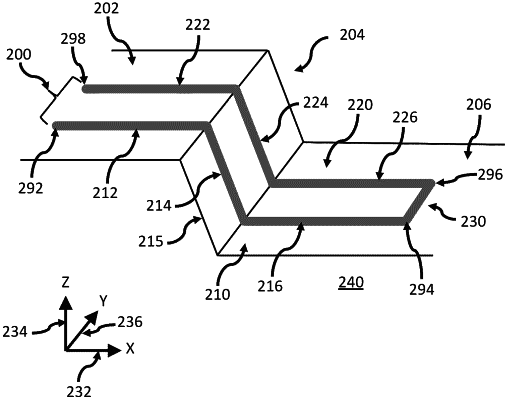| CPC H01L 21/288 (2013.01) [B41M 1/22 (2013.01); B82Y 40/00 (2013.01); H01B 1/02 (2013.01)] | 20 Claims |

|
1. A method of forming an electrically conductive feature traversing a microscopic step on or in a substrate, the method comprising the steps of:
(A) continuously extruding a metallic nanoparticle composition from a capillary tube while displacing the capillary tube relative to the substrate along a first portion of a trajectory from a first position past an edge of the microscopic step to a second position to form a first extrudate, the first position being above a step top portion, the displacing being predominantly lateral, the first extrudate overlying and contacting the step top portion, the first extrudate being continuous;
(B) continuously extruding the metallic nanoparticle composition from the capillary tube while displacing the capillary tube relative to the substrate along a second portion of the trajectory from the second position to a third position to form a second extrudate, the second portion of the trajectory being sloped, the third position being above a step bottom portion and being at a lower height than the second position, the second extrudate being continuous and being connected to the first extrudate; and
(C) continuously extruding the metallic nanoparticle composition from the capillary tube while displacing the capillary tube relative to the substrate along a third portion of the trajectory from the third position to a fourth position to form a third extrudate, the fourth position being above the step bottom portion, the displacing being predominantly lateral, the third extrudate overlying and contacting the step bottom portion, the third extrudate being continuous and being connected to the second extrudate;
wherein the electrically conductive feature comprises the first extrudate, the second extrudate, and the third extrudate.
|